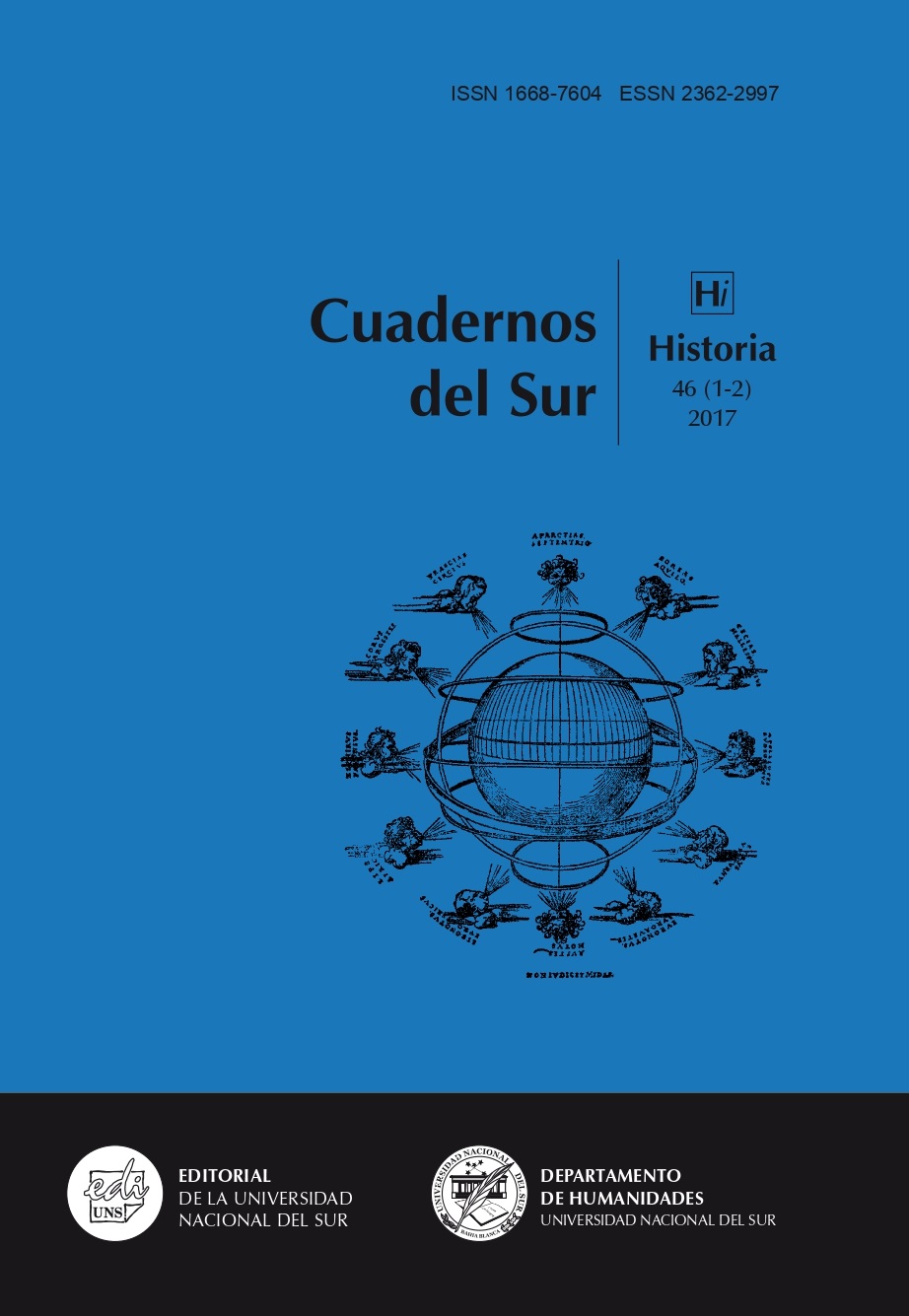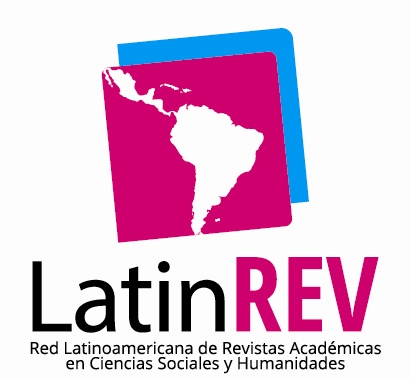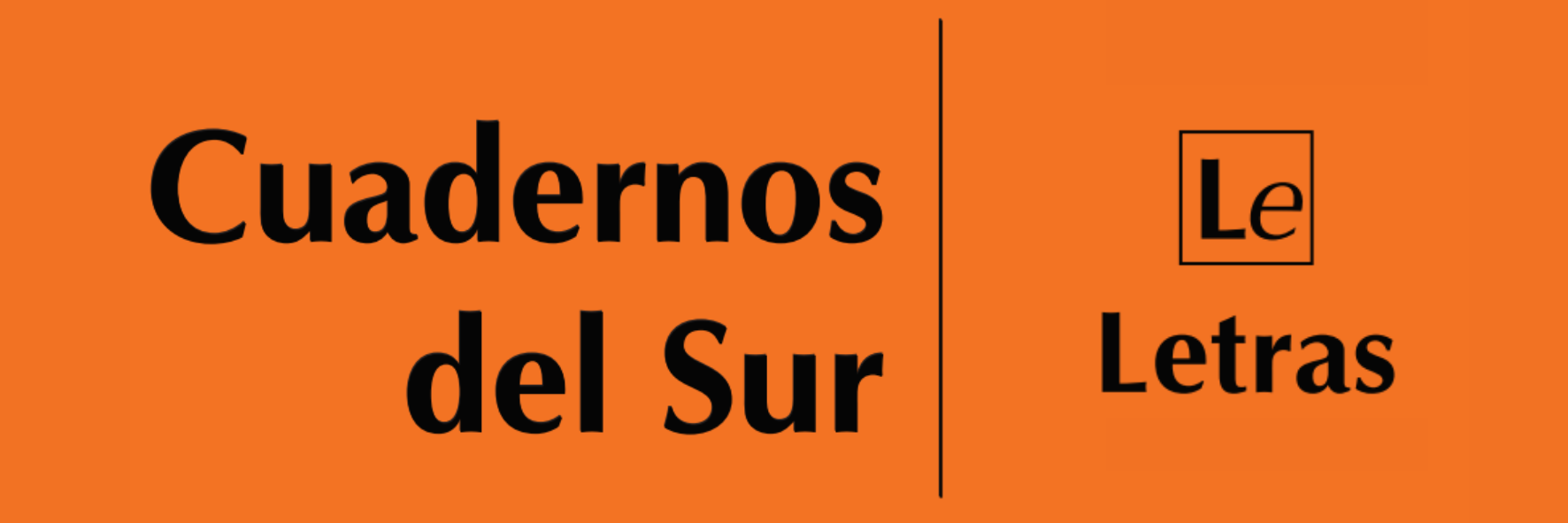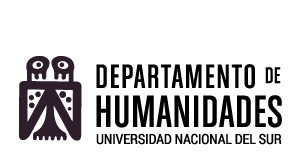El problema de la datación del Libro del Amduat
Palabras clave:
transmisión, Amduat, intertextualidadResumen
La compleja cuestión de la transmisión y datación de los textos funerarios del Antiguo Egipto conoce una rica historia. En este contexto, la existencia de presuntos antecedentes que podrían retrotraerse al Reino Medio para el Libro del Amduat, composición funeraria del Reino Nuevo, ha sido una cuestión muy debatida entre los especialistas que aún conserva su vigencia, como a continuación veremos.
El presente trabajo se propone como una puesta al día y sinopsis cronológica del estado de la cuestión respecto de la controvertida cuestión de la datación del Libro del Amduat, con un recorrido por argumentos que van desde lo lingüístico a aquellos de carácter arquitectónico. Para concluir, se esbozará una teoría de datación propia que atiende, o pretende atender, a una visión integral de la cultura o, en otras palabras, a la cosmovisión específica de un período como rectora de la producción funeraria.
Descargas
Citas
Abitz, Friederich (1974), Die religiöse Bedeutung der sogenannten Grabräuberschächte in den ägyptischen Königsgräbern der 18. bis 20. Dynastie. Wiesbaden, Otto Harrassowitz.
----- (1995), Pharao als Gott in den Unterweltsbücher des Neuen Reiches. Orbis Biblicus et Orientalis 146, Fribourg/Göttingen. Universitätsverlag, Vandenhoeck and Ruprecht.
Abt, Theodor; Hornung, Erik (2003), Knowledge for the Afterlife: the Egyptian Amduat -A quest for immortality, Zurich, Living Human Heritage Publications.
Allen, James (1989), The Cosmology of the Pyramids Texts, Religion and Philosophy in Ancient Egypt, En William Kelly Simpson (ed), Yale Egyptological Studies 3, New Haven, Yale University Press, pp. 1-28 .
Altenmüller, Hartwig (1968), “Zu Überlieferung des Amduat”, Jaarbericht van het Vooraziatisch-Egyptisch Genootschap “Ex Oriente Lux”, pp. 27-42.
----- (1970), Jenseitsbücher, Jenseitsführer, Handbuch der Orientalistik I 69-81, Leiden-Koln, E.J. Brill.
Assmann, Jan (1970), J. Der König als Sonnenpriester: ein kosmographischer Begleittext zur kultischen Sonnenhymnik in thebanischen Tempeln und Gräbern. Abhandlungen des Deutschen Archäologischen Instituts Kairo 7, Glückstadt, Hamburg, Verlag J.J. Augustin.
----- (1975), Äegyptische Hymnen und Gebete, Munich, Artemis.
----- (1995a), Egyptian Solar Religion in New Kingdom. Re, Amun and the crisis of polytheism, New York, Kegan Paul.
----- (1995b), “Unio Liturgica. Die kultische Einstimmung in Götterweltlichen Lobpreis als Grundmotiv “Esoterischer” Überlieferung im Alten Ägypten”, Secrecy & Concealment, en Hans G. Kippenberg & Guy G. Stroumsa (Eds.), Studies in the History of Mediterranean & Near Eastern Religion, Leiden-New York-Köln E.J. Brill, pp. 37-60.
----- (2001), The Search for God in Ancient Egypt, Ithaca, Cornell University Press.
----- (2005), Egipto, historia de un sentido, Madrid, Akal.
Baines, John (1987), “Practical Religion and Piety”, Journal of Egyptian Archaeology 73, pp.79-98.
----- (1990), “Restricted Knowledge, Hierarchy, and Decorum: Modern Perceptions and Ancient Institutions”, Journal of the American Research Center in Egypt 27, pp. 1-23.
Barta, Winfried (1969-1970), “Zur Verteilung der 12 Nachstunden des Amduat im Grabe Tuthmosis III”, Jaarbericht van het Vooraziatisch-Egyptisch Genootschap “Ex Oriente Lux” 7, pp. 164-168.
Bonanno, Mariano (2014), “La significación de la caverna de Sokar según la relación Ra-Osiris en el Libro del Amduat”, Aula Orientalis 32, n° 1, pp. 31-47.
----- (2015), La Duat como espacio de una dialéctica de la regeneración. In-habitación y re-significación del espacio funerario. British Archaeological Reports International Series 2738, Oxford.
Breasted, Henry (1912), Development of Religion and Thought in Ancient Egypt, New York, Harpers & Brothers.
Bucher, Paul (1932), Les textes des tombes de Thoutmosis III et d`Amènophis II, MIFAO (Mémoires publiés par les membres de l´Institut français d´archeology orientale), vol. 60, El Cairo.
Budge, Wallis (1904), The Gods of Egyptians, 2 vols. London, Methuen & Co.
Carrier, Claude (2009), Grands Livres funèraires de l`Egypte pharaonique, Cybèle, París.
Catania, Silvana (2007), “La relación entre el poder divino y el funcionario a través del ritual de adoración a fines de la Dinastía XVIII”, en Ames, Cecilia y Sagristani, Marta, (comps.), Estudios Interdisciplinarios de Historia Antigua I. Córdoba, Universidad Nacional de Córdoba, pp. 133-145.
Ĉerný, Jaroslav (1973), “A Community of Workmen at Thebes in the Ramesside Period”, vol. 50 de Bibliotèque d´étude, Institut français d´archeology orientale du Caire.
Ĉerný, Jaroslav; Gardiner, Alan (1957), Hieratic Ostraca, Oxford, Oxford University Press.
Darnell, John (2004), The Enigmatic Netherworld Books of the Solar-Osirian Unity, OBO 198, Fribourg-Göttingen, Vandenhoeck and Ruprecht.
Grapow, Hermann (1936), “Studien zu den thebanischen Könnigsgräbern”, Zeitschrift für ägyptische Sprache und Altertumskunde 72, pp. 12-39.
Hornung, Erik (1991), Die Nachtfahrt der Sonne. Eine altägyptische Beschreibung des Jenseits, Munich, Artemis Winkler.
----- (1992a), Idea into Image. Essays on Ancient Egyptians Thought, New York, Princeton University Press, Timken Publishers.
----- (1992b), “The Rediscovery of Akhenaten and His Place in Religion”, Journal of the American Research Center in Egypt 29, pp. 43-49.
----- (1999), The Ancient Egyptian Books of the Afterlife, Ithaca, Cornell University Press.
----- (2006), Die Verborgene Raum der Unterwelt in der ägyptischen Literatur, Loprieno, Antonio (ed.), Mensch und Raum von der Antike zur Gegenwart Coloquium Rauricum Band 9, München-Leipzig, K G Saur, pp. 23-34.
Jansen-Winkeln, Karl (1996), “`Horizont´ und `Verklärtheit´: Zur Bedeutung der Wurzel Ax”, Göttinger Miszellen 23, pp. 201-215.
----- (2012), “Zur sprache und Datierung des Amduat”, Journal of Egyptian Archaeology 98 pp. 87-106
Lesko, Leonard (1977), “The shortest Book of Amduat?”, en Studies in Honor of George R. Hughes, Studies in Ancient Oriental Civilization 39, Chicago.
----- (1994), “Pharaoh´s Workers: The Villagers of Deir el Medina”, Cornell University Press.
Manassa, Colleen (2007), The Late Egyptian Underworld: Sarcophagi and Related Texts from the Nectanebid Period, Ägypten und Altes Testament 72, Wiesbaden.
Mauric-Barberio, Florence (2001), “Le premier exemplaire du Livre de l`Amduat”, Bulletin de l´Institut français d´archéologie orientale 101, pp. 315-350.
Minas-Nerpel Martina. (2006), Der Gott Chepri. Untersuchungen zu Schriftzeugnissen und Ikonographischen Quellen vom Alten Reich bis in griechisch-römische Zeit, Orientalia Lovaniensia Analecta 154, Leuven, Peeters Publishers.
Morenz, Sigfried (1992), Egyptian Religion, Ithaca, Methuen & Co Ltd.
Piankoff, Alexandre (1964), “Les compositions théologiques du Nouvel Empire egyptien”, Bulletin de l´Institut français d´archéologie orientale 62, pp. 121-128;
Quack, Joachim (1997), Review of G. Roulin, Le livre de la nuit, Die Welt des Orients 28, pp. 177-181.
Quirke, Stephen (1994), “Translating Ma´at”, Journal of Egyptian Archaeology 80, pp. 219-231.
Redford, Donald (1976), “The Sun-disc in Akhenaten´s Program: Its Worship and Antecedents”, Journal of the American Research Center in Egypt 13, pp. 47-61.
Roberson, Joshua (2009), “The Early History of “New Kingdom” Netherworld Iconography: A Late Middle Kingdom Apotropaic Wand Reconsidered”, en: Archaism and Innovation: Studies in the Culture of Middle Kingdom Egypt, Silverman, D.; Kelly Simpson, Kelly; Wegner, Joseph. (eds), Yale University, Massachusetts, pp. 427-445.
Rößler-Köhler, Ursula (1980), “Jenseitsvorstellungen”, Lexikon der Ägyptologie III, cols. 252-267.
----- (1999), “Königliche Vorstellungen zu Grab und Jenseits im Mittleren Reich, Teil I: Ein, ‘Gottesbegräbnis’ des Mittleren Reiches in königlichem Kontext: Amduat 4. und 5. Stunde”, en Rolf Gundlach and Wilfried Seipel (eds.), Das frühe ägyptische Königtum, Akten des 2. Symposiums zur ägyptischen Königsideologie in Wien, Wiesbaden, Harrasowitz, pp. 73–96.
----- (1999), Zur Tradierungsgeschichte des Totenbuches zwischen der 17. Und 22. Dynastie, SAT 3, Harrassowitz Verlag.
Sadek, Abdel-Aziz Fahmy (1985), Contribution a L`Ètude de L`Amdouat. Lexikon der Ägyptologie 65, Freiburg. Göttingen, Vandenhoeck Ruprecht.
Saleh, Mohamed (1984), Das Totenbuch in den Beamtengrabern des Neuen Reiches, Deutsches Archaologisches Institut, Abteilung Kairo, Archiologisches Veroiffentlichungen 46, Mainz am Rhein, Verlag Philipp von Zabern.
Schott, Sigfried (1958), Die Schrift der verborgenen Kammer in Königsgräbern der 18.Dynastie, Nachrichten von der Akademie der Wissenschaften zu Göttingen 4, Göttingen, Vandenhoeck & Ruprecht.
Sethe, Kurt (1929), Amun um die acht Urgötter von Hermopolis. Abhandlungen der Preußischen Akademie der Wissenschaften 4, Hamburg-New York. Berlin, Verlag der Akademie der Wissenschaften.
Sørensen, Jans (1989a), The So-called Democratization of Egyptian Funerary Literature as a Social-cultural Process, The Religions of the Ancient Egyptians, Cognitive Structures and Popular Expressions, Proceedings of Symposia in Uppsala and Bergen 1987 and 1988; Uppsala Studies in Ancient Mediterranean and Near Eastern Civilizations, 20, Uppsala, pp. 109-125.
----- (1989b), Ancient Egyptian Religious Thought and the XVIth Hermetici Tratacte. The Religions of the Ancient Egyptians, pp. 41-57.
Vandersleyen, Claude (1975), “Le Sens Simbolique des puits funèraire dans l`Egtpte ancienne”, Chronique d´Égypte 50, pp. 151-157.
Von Lieven, Alexandra (2007), Grundriss des Laufes der Sterne: das sogenannte Nutbuch, vol. 1, CNI Publications, Museum Tusculanum Pressm, Copenhagen.
----- (2012), “Book of the Dead, Book of the Living: BD Spells as Temple Texts”, Journal of Egyptian Archaeology 98, pp. 249-267.
Voß, Susanne (1996), “Ein liturgisch-kosmographischer Zyklus im Re-Bezirk des Totentempels Ramses´ III in Medinet Habu”, Studien zur Altägyptischen Kultur 23, pp. 377-396.
Wegner, Josef (2009), “The Tomb of Senwosert III at Abydos: Considerations on the Origins and Development of the Royal Amduat Tomb”, en Archaism and Innovation: Studies in the Culture of Midle Kingdom Egypt. Silverman, D.; Kelly Simpson, K; Wegner, J. (eds), Yale University, Massachusetts, pp. 103-169.
Wente, Edward (1982), “Mysticism in Pharaonic Egypt?”, Journal of Near Eastern Studies 41, n°3, pp. 161-179.
Werning, Daniel (2013), “Linguistic dating of the Netherworld Books attested in the New Kingdom: a critical review”, en G. Moers et alii (eds.), Dating Egyptian Literary Texts. Lingua Aegyptia. Studia Monographica 11, Hamburg, Widmaier Verlag.
Westendorf, Wolfhart (2002), “Das Ende der Unterwelt in der Amarnazeit oder: Die Erde als Klugel”, Göttinger Miszellen 187, pp. 101-111.
Wiebach-Koepke, Silvia (2007), Sonnenlauf und Kosmiche Regeneration. Zur Systematik der Lebensprozesse in den Unterweltsbüchern. Wiesbaden, Harrassowitz Verlag.
Youssef, Abdulhamid (1959), “The Cairo Imduat Papyri”, BIFAO 82, pp. 1-17.
Cómo citar
Número
Sección
Licencia
Derechos de autor 2020 Cuadernos del Sur Historia

Esta obra está bajo una licencia internacional Creative Commons Atribución-NoComercial-CompartirIgual 4.0.
Aquellos autores/as que tengan publicaciones con esta revista, aceptan los términos siguientes:
- Los autores/as conservarán sus derechos de autor y garantizarán a la revista el derecho de primera publicación de su obra, el cuál estará simultáneamente sujeto a la licencia Atribución-No Comercial 4.0 Internacional CC BY-NC 4.0.
- Los autores/as podrán adoptar otros acuerdos de licencia no exclusiva de distribución de la versión de la obra publicada (p. ej.: depositarla en un archivo telemático institucional o publicarla en un volumen monográfico) siempre que se indique la publicación inicial en esta revista.
- Se permite y recomienda a los autores/as difundir su obra a través de Internet (p. ej.: en archivos telemáticos institucionales o en su página web) una vez publicado su trabajo, lo cual puede producir intercambios interesantes y aumentar las citas de la obra publicada. (Véase El efecto del acceso abierto).










